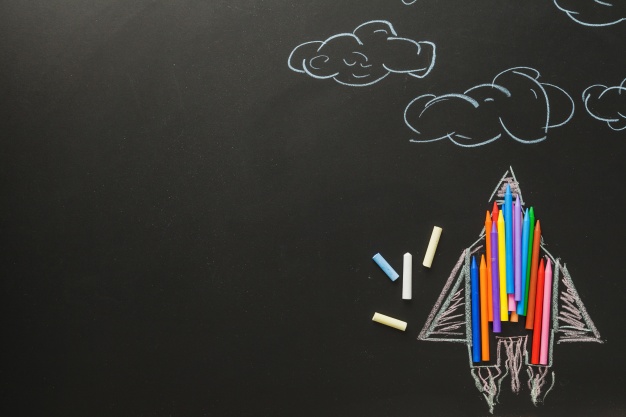
Discovering the Different Kinds of Creativity and Why They Matter

Creativity is the ability to produce unique and valuable ideas While some believe it is an innate trait, it can be developed and cultivated Creativity has numerous benefits, including reducing stress, boosting engagement, and improving problem-solving skills Intelligence and creativity are interconnected, but creativity can be learned Ultimately, creativity is essential for personal and professional growth
Creativity is often misunderstood as a mysterious talent that some people are simply born with, but in reality, it is a skill that can be honed through practice and persistence. Essentially, creativity involves generating novel and valuable ideas or solutions to problems. It is what drives artists to create beautiful masterpieces and writers to pen intriguing stories with unique perspectives. Without creativity, the world would be devoid of innovation and imagination.
Creativity is a gift that should never be taken for granted. Like a river, it can dry up if not nurtured and maintained. Those fortunate enough to experience the flow of creativity must work to ensure it remains a constant force. To do so, it is essential to hone and refine it daily, preventing it from becoming stagnant. This means breaking free from traditional modes of thinking and exploring innovative approaches to solving problems. After all, a fresh and creative solution to an old issue is what everyone seeks, and conventional thinking simply won't cut it.
Creativity requires letting go of the limitations of conservative thinking and embracing new ideas. True creativity involves developing original concepts, rather than simply copying or adapting existing works of art.
Common Misconceptions about Creativity
Creativity is often misunderstood as an innate talent. While some individuals may possess natural creative abilities, it is important to note that creativity can also be developed and refined like a skill. Without practice and cultivation, even those born with a natural inclination towards creativity may struggle to maintain it.
Passion and drive are essential components for fostering creativity, whether or not it is innate. Merely having imaginative capabilities without taking any action is comparable to a mere reverie. It is a common misconception that creativity is exclusive to those who are right-brained. The popular theory stipulates that the right brain is accountable for creativity while the left brain is responsible for logic.
While it may be partially true that those with dominant right brains are often associated with creativity, it is not accurate to claim that they are the only ones capable of generating new ideas. This notion would discount the countless discoveries and inventions made by scientists and mathematicians who have been widely recognized for their innovative thinking. In reality, creativity is not confined to one side of the brain, but rather results from the coordinated efforts of both the left and right hemispheres.
Although certain regions of the brain are dedicated to specific functions, it is the interplay between these regions that ultimately leads to cognition. When it comes to creativity, there are three primary parts of the brain that play a role in the process:
1. The executive attention network
This is the part that helps to pay attention and improve focus. Usually, it is seen that attention and focus are necessary.
The network responsible for creating a sense of empathy and imagination is known as the imagination network. This network is activated when you imagine yourself in someone else's situation or when you indulge in daydreaming.
3. The salience network
The salience network is the one that helps you to identify when things are deep down inside your brain and salient to your surroundings.
You may encounter a distant creature with a distinct black and white appearance while strolling, which you recognize as a Skunk. Remembering its name, you manage to avoid being sprayed by its unpleasant scent.
Why is the Need for Creativity?
Creativity is an indispensable element that contributes to the progress of humanity. It is through creativity that innovative ideas and groundbreaking inventions are born. Take for example the discovery of the structure of the Benzene molecule by Kekule, which was made possible because of his creative thinking. This breakthrough paved the way for the advancement of chemistry and opened up new possibilities for future discoveries. In the same vein, Einstein's achievements were also made possible through the collaboration of science and creativity. Without creativity, the world as we know it would not be possible.
As you explore new ideas and tackle current challenges, you may come across gaps that cannot be bridged with logic alone. This is where imagination and creativity come into play. By tapping into your creative side, you can fill in these gaps and pave the way for innovation and discovery. In fact, without the combination of logic and creativity, many of the world's greatest inventions and discoveries would not exist. So, whether it's finding a solution to a common problem or simply improving your daily routine, creativity is a powerful tool that should never be overlooked.
Creativity is the driving force behind the existence of the arts stream. It is responsible for the birth of imaginative and abstract art, which would not have been possible without the power of imagination. This creativity is reflected in the unique and innovative shapes of various utensils and objects. It allows people to discover multiple uses for a single thing, showcasing the limitless potential of creativity.
In terms of personal lives, the impact of creativity is as follows:
1. Reduces stress
Reducing stress can be aided by tapping into your creativity. Studies show that moderate creativity can function as an antidepressant for your brain, regardless of whether your creation is considered unique or not.
What is essential is indulging in the process of creativity. Soaking your brain in creative juices is like having a vacation in a jacuzzi.
2. Improved engagement levels
By utilizing your creativity, you can combat the negative effects of various health issues that may cause disconnection from the world. Engaging in creative activities not only occupies your mind but also increases your connection to your surroundings, leading to a heightened state of engagement.
Moreover, pursuing creative endeavors often results in meeting individuals who share similar interests and values. This social connection is crucial for maintaining both physical and mental health, as it promotes a sense of well-being and a positive outlook.
3. Stress buster
Engaging in creative activities can provide a much-needed break from the stresses of daily life. Research suggests that creative pursuits can have a positive impact on mental health, with some studies even showing that it can alleviate symptoms of depression. Not only does it provide a sense of accomplishment and satisfaction, but it also allows us to focus on the present moment and let go of our worries.
Creativity serves as a valuable tool for relieving stress and promoting relaxation. When your creative processes are activated, your mind releases the tension and sparks the flow of creative energy. Furthermore, creativity can contribute to enhancing your current mental state and ensuring its sustainability. For a comprehensive understanding of creativity, watch this video explaining its definition and significance.
Connection Between Creativity and Intelligence
While creativity and intelligence may seem similar and are often used interchangeably, it's important to recognize that they are distinct concepts. While they are connected, they cannot be used in place of one another.
Creativity can be seen as a particular type of intelligence, and the two can overlap. Intelligence is often seen as a more routine function that is developed through years of practice. While someone who is intelligent may not necessarily be creative, creativity can be seen as a byproduct and a catalyst for intelligence. While mechanical thinking can be attributed to intelligence, creativity is a key factor in initiating it.
Is Creativity Natural or Learned?
Despite some analysts claiming that creativity and intelligence have no correlation, it is important to note that the two often intersect and can influence each other. While there may not be concrete data proving a direct relationship between the two, it is difficult to make a definitive statement on the matter.The question of whether creativity is innate or acquired is a long-standing one, with no clear answer. Despite this, many creative individuals have had to overcome challenging circumstances, such as familial or professional criticism, to pursue their passions. Age is also a significant factor in creative potential, as research has shown that young children possess exceptional creativity akin to that of famous artists and thinkers. However, as they grow older, this ability tends to decline gradually, leading to a shift in aspirations from imaginative professions to more practical ones.
Engaging in activities that are different from writing, such as gardening or exercise, can help writers keep their creativity alive and even learn new ways to be creative. For example, taking a simple walk has been known to trigger creativity in some people. In fact, even Einstein took long walks after a rigorous day of work to help stimulate his imagination and creativity. This kind of break can ease the mind and refresh writers for another productive day of writing.
Creativity can be innate for some, but for others it requires consistent training and practice. Like any other skill, dedication is key. Interestingly, studies have shown that over 70% of individuals experience bursts of creativity in the shower or during solitary activities like walking or sitting alone. By intentionally minimizing distractions, one can cultivate an environment conducive to creative thinking. While creativity can sometimes strike suddenly, it often needs to be nurtured and cultivated over time.
Conclusion
The ability to think creatively can bring a significant impact in various areas of life. It serves as a catalyst for innovation and progress. It involves more than just generating an idea, as it requires continuous effort to develop and enhance the concept.
Just like any other skill, creativity can be polished and developed over time, and just like any other skill, if not practiced, it is easy to lose.















